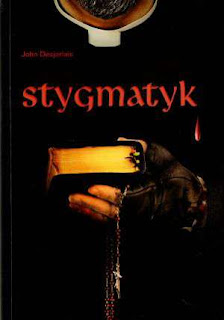(excerpt from VIPER) When Selena rounded the corner of her street she noticed the Christmas decor strung on neighbors’ shrubs and eaves. It was too early in the day to see lights, but doors sported wreaths and Santa Claus cut-outs, while lawns displayed sleighs, reindeer and plastic snowmen. She hadn’t even started decorating and wouldn’t until the novena before Noche-buena, Christmas Eve. During the nine days of the posadas, she and her brothers had paraded through the neighborhood each night with all the other kids, in bright costumes, holding candles and singing Mexican carols with guitars and, in imitation of Joseph and Mary, asking neighbors if they can stay. The first two always refused, and the third took them inside where there was already a barn scene set up. Everyone prayed the rosary in Spanish, the Santa Marías rolling like soft waves. Afterward, they partied with piñatas, fritters and fresh fruit drinks like horchata, chía, and piña. One time Lorenzo got into the men’s tequila supply somehow and spent the rest of the night kneeling in front of the toilet.
This year I’m going to keep it simple, she thought, parking at the curb. Candles in the windows as usual, garland on the banisters. I’ll set up the pesebre with the carved olive tree figures of the whole nativity scene.
Her family had a large set in the living room and each person had a little crèche in their rooms. Every year someone disappeared from the big set-up; if it wasn’t Saint Joseph it was a shepherd or a magi. One year they couldn’t find the Baby Jesus. Selena cried because she thought there wouldn’t be a Christmas that year because of it. The Baby Jesus turned up in time, albeit with tiny bite marks from Mamí’s Chihuahua. Selena was still missing a magi from her own set, the one carrying the gold. Maybe this year I’ll find him, she mused with a soft chuckle. But then who else will disappear?
The familia always gathered at Comadre María’s. First, Christmas midnight Mass, then chow down at madrina’s. Her mouth watered thinking of the colorful bacalao a la vizcaina and romeritos in mole sauce. This mess had better be over with by then, she muttered as she stepped out and trotted to the front door.
Still plenty of light left in the day. She checked her watch, thinking she didn’t have time to think about presents. Anyway, family gifts weren’t given until Epiphany, Dia de los Santos Reyes Magos. Reed might expect something at Christmas, though. There was the cognac she bought for a special occasion. Maybe that. But would she see him again at all? Her heart squeezed like a limón.
She jingled her keys, found the one for the front door and plunged it in, rushing through a mental list: bundle up, it’s getting cold. After changing, drive to the office, get the Charger and race down I-88 to Prophetstown. Do I need to get gas? Take the GPS just in case I get lost even if I was there before. Check with Felicia about office calls.
She shouldered against the door but it didn’t budge. The deadbolt was engaged. Don’t remember doing that, she thought. Glancing over her shoulder furtively, she leaned her body on the door frame and fingered the keychain again, opened the door, and stepped inside.
A glass tinkled in the kitchen.
Someone was in the house.
Madre de Dios, they went for Miguel first and now they’re here.
She backed to the wall and drew her pistol from the purse. She set the purse down and double-fisted the SIG Sauer against her thumping chest. She padded toward the kitchen, her mouth suddenly dry. A cup scraped on a countertop.
She lunged into the kitchen, gun high.
(You’ll have to buy VIPER to find out who was in the kitchen and what happens next!)
This year I’m going to keep it simple, she thought, parking at the curb. Candles in the windows as usual, garland on the banisters. I’ll set up the pesebre with the carved olive tree figures of the whole nativity scene.
Her family had a large set in the living room and each person had a little crèche in their rooms. Every year someone disappeared from the big set-up; if it wasn’t Saint Joseph it was a shepherd or a magi. One year they couldn’t find the Baby Jesus. Selena cried because she thought there wouldn’t be a Christmas that year because of it. The Baby Jesus turned up in time, albeit with tiny bite marks from Mamí’s Chihuahua. Selena was still missing a magi from her own set, the one carrying the gold. Maybe this year I’ll find him, she mused with a soft chuckle. But then who else will disappear?
The familia always gathered at Comadre María’s. First, Christmas midnight Mass, then chow down at madrina’s. Her mouth watered thinking of the colorful bacalao a la vizcaina and romeritos in mole sauce. This mess had better be over with by then, she muttered as she stepped out and trotted to the front door.
Still plenty of light left in the day. She checked her watch, thinking she didn’t have time to think about presents. Anyway, family gifts weren’t given until Epiphany, Dia de los Santos Reyes Magos. Reed might expect something at Christmas, though. There was the cognac she bought for a special occasion. Maybe that. But would she see him again at all? Her heart squeezed like a limón.
She jingled her keys, found the one for the front door and plunged it in, rushing through a mental list: bundle up, it’s getting cold. After changing, drive to the office, get the Charger and race down I-88 to Prophetstown. Do I need to get gas? Take the GPS just in case I get lost even if I was there before. Check with Felicia about office calls.
She shouldered against the door but it didn’t budge. The deadbolt was engaged. Don’t remember doing that, she thought. Glancing over her shoulder furtively, she leaned her body on the door frame and fingered the keychain again, opened the door, and stepped inside.
A glass tinkled in the kitchen.
Someone was in the house.
Madre de Dios, they went for Miguel first and now they’re here.
She backed to the wall and drew her pistol from the purse. She set the purse down and double-fisted the SIG Sauer against her thumping chest. She padded toward the kitchen, her mouth suddenly dry. A cup scraped on a countertop.
She lunged into the kitchen, gun high.
(You’ll have to buy VIPER to find out who was in the kitchen and what happens next!)



























